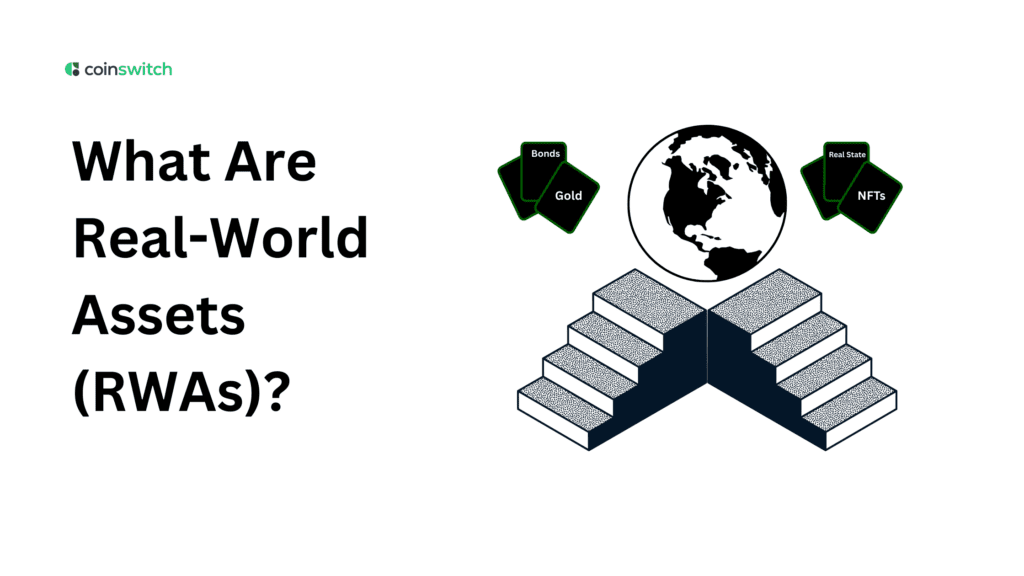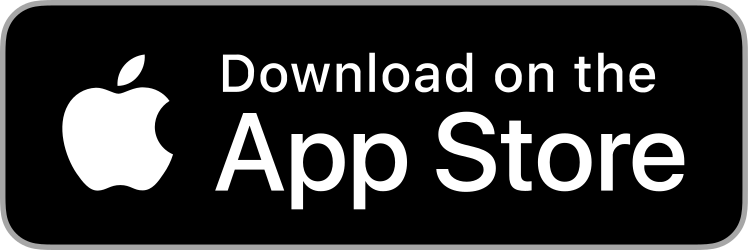Real-World Assets (RWAs) are physical or legally recognized items that hold economic value and can be brought onto the blockchain through tokenization. Tokenization enables representation of these assets on a blockchain as digital tokens. These assets can include real estate, government bonds, commodities like gold, and fine art. By converting them into digital tokens, these assets become usable in decentralized financial systems.
RWAs carry intrinsic value from the traditional world, unlike native crypto tokens, which often derive value from speculation, supply-demand dynamics, or governance utility. Their integration with blockchain brings tangible yield into DeFi, allowing protocols to offer stable, collateral-backed services like lending, liquidity provisioning, or staking.
RWAs are widely viewed as a way to expand use cases for blockchain. They help bridge the gap between traditional finance (TradFi) and decentralized finance (DeFi), opening the door for regulated, transparent, and globally accessible capital markets.
Tokenizing Real-World Assets
Tokenization refers to the process of converting the rights to a real-world asset into a digital token that lives on a blockchain. Each token represents ownership, or access to a specific asset, enhancing its movement and utility across decentralized platforms.
The tokenization process typically involves:
- Asset Custody: A legal entity or platform acquires and secures the real asset, such as a property, invoice pool, or treasury bond.
- Token Issuance: A corresponding token is created on a blockchain (usually using ERC-20 or ERC-721 standards), representing a share or full ownership of the asset.
- Smart Contract Management: These tokens operate under smart contracts that automate rules, ownership records, income distribution, and transfer conditions.
- Legal Framework: Off-chain legal agreements connect the token to the real-world asset, often through an SPV (special purpose vehicle), ensuring that ownership of the token reflects enforceable rights.
Projects have tokenized a wide range of assets. A pool of US Treasury Bills might be wrapped and tokenized by a custodian and issued on Ethereum. A real estate investment firm could tokenize ownership in an apartment complex. Even carbon credits or fine art can be split into fractional tokens and traded across the world.
This approach introduces programmability and liquidity to assets that were once slow, illiquid, and jurisdiction-bound. It allows investors to move in and out of positions instantly, participate in global markets, and integrate asset-backed tokens into broader DeFi products.
Read More: What is Etherscan and How Do You Use It?
Real-World Assets in DeFi
Tokenized RWAs become functional assets within DeFi systems. Once issued, they can be traded on decentralized exchanges, used as collateral in lending protocols, or held in decentralized treasuries to generate yield.
Projects like MakerDAO, Goldfinch, Centrifuge, and Maple Finance are early adopters of this model. MakerDAO accepts tokenized T-bills in its collateral vaults. These RWAs generate yield and support the supply of DAI, a decentralized stablecoin.
In Goldfinch, a decentralized credit protocol, real-world loans to small and medium businesses in emerging markets are tokenized and made available for DeFi lenders. Investors earn yield from off-chain economic activity, while borrowers get access to decentralized capital.
Centrifuge, the platform for tokenized real-world assets, brings invoice financing and asset-backed lending onto the blockchain. Companies can finance their real-world receivables through tokenized pools that DeFi users can invest in. These pools generate yield, diversify DeFi exposure, and make DeFi capital more productive.
RWAs in DeFi unlock collateral options beyond crypto-native assets. They help reduce volatility, improve capital efficiency, and attract long-term institutional participation by offering a predictable yield from real economic activity.
Read More: What is Kubernetes and How Does It Link to Crypto?
Benefits of Real-World Asset Tokenization
Tokenizing RWAs brings clear advantages in terms of liquidity, accessibility, diversification, and efficiency.
Fractional Ownership
Tokenization breaks down high-value assets into smaller units. For instance, a $10 million commercial building can be represented by 10,000 tokens, allowing smaller investors to buy in. This fractional ownership removes barriers to entry, democratizing access to premium investments.
24/7 Market Access
Unlike traditional assets that trade on fixed hours or via intermediaries, tokenized RWAs operate on blockchain networks that never sleep. Investors can trade, lend, or stake their tokens around the clock, making capital more dynamic and responsive.
Improved Liquidity
Tokenized versions of slow-moving assets become instantly transferable. A token representing a portion of a bond portfolio can be sold on secondary markets without months of paperwork. This enhances liquidity and speeds up transactions.
Interoperability with DeFi
RWA tokens integrate directly into DeFi protocols. They work as collateral, contribute to liquidity pools, or act as vault assets for algorithmic strategies. Developers build composable financial products using them, enabling deeper capital flows.
Global Participation
Blockchain enables borderless investment. Investors in Asia can hold tokenized shares of a property in the US, without the need for bank intermediaries. It reduces friction in cross-border finance, expands reach, and levels the playing field.
Transparency and Traceability
Smart contracts automate transactions, and blockchains offer transparent recordkeeping. Each token’s issuance, transfer, and income distribution are verifiable. This enhances trust and reduces fraud.
Navigating the Risks of RWA Tokenization
While tokenized RWAs offer significant benefits, they also come with their share of risks that stakeholders must manage carefully.
Legal and Regulatory Uncertainty
Many jurisdictions lack clear rules around tokenized ownership, cross-border asset control, or investor protection in DeFi systems. Without harmonized regulations, token holders may face legal gray areas that impact the enforceability of rights.
Custody and Asset Verification
The token’s value depends on the underlying asset being secure and legally tied to the token. This requires reliable custodians, transparent audits, and verifiable documentation. If the real asset is compromised or misrepresented, it affects the token value.
Counterparty Risk
Platforms or entities managing tokenization can default, mismanage funds, or disappear. Token holders may have no direct legal recourse without robust legal structuring and jurisdictional enforcement mechanisms.
Technical and Smart Contract Risk
Bugs in smart contracts can result in loss of funds, incorrect payouts, or asset mismanagement. Even well-audited contracts carry risk, especially when integrated with evolving DeFi platforms or novel financial primitives.
Liquidity Risk
Tokenized RWAs are often promoted as liquid assets, but secondary market depth can be shallow. Tokens may exist, but if there are few buyers or platforms to support trades, they become illiquid in practice.
Data and Pricing Oracles
RWAs need reliable pricing and asset verification. This often requires oracles to feed real-world data into smart contracts. Inaccurate or delayed oracle data can result in incorrect collateral valuations or liquidation events.
Jurisdictional Complexity
Cross-border tokenization involves complications with taxes, asset seizure laws, and multi-jurisdictional legal conflicts. DeFi may be global, but assets remain tied to physical locations, governed by local rules.
Risk mitigation requires strong legal frameworks, trusted custodians, regular audits, battle-tested smart contracts, and third-party verification tools. Developers and protocols must treat RWAs as a hybrid product: part finance, part code, part legal infrastructure.
The Chainlink Platform’s Role in Tokenized RWAs
Chainlink plays a crucial role in making RWAs functional and trustworthy within decentralized ecosystems. The decentralized oracle network acts as a bridge between off-chain data and on-chain smart contracts, solving critical gaps in RWA integration.
Reliable Price Feeds
RWAs rely on accurate market data for valuations, especially when used as collateral. Chainlink Price Feeds aggregate prices from multiple sources and deliver them on-chain. This ensures that smart contracts operate with real-time, tamper-proof pricing.
Proof of Reserves
For tokenized assets backed by real-world assets, Chainlink provides Proof of Reserve feeds. These feeds verify whether a token is truly backed 1:1 by the underlying asset. For example, a token representing gold can use Chainlink to confirm the quantity in vaults.
Automation via Chainlink Keepers
Keepers are decentralized bots that trigger smart contract functions based on predefined conditions. For RWAs, this means automating payouts, rebalancing portfolios, or enforcing compliance triggers in real time without human intervention.
Cross-Chain Interoperability
Through Chainlink CCIP (Cross-Chain Interoperability Protocol), tokenized assets can move across blockchains. A tokenized treasury bond issued on Ethereum could be transferred or referenced on another chain like Avalanche, expanding the reach and liquidity of RWA.
Collaboration with RWA Projects
Chainlink actively partners with RWA tokenization protocols, including Centrifuge, Maple, and Goldfinch. These integrations enhance transparency, pricing accuracy, and automation for asset-backed DeFi.
Enhanced Transparency and Trust
Institutional players often require data attestation and proof of process. Chainlink oracles provide cryptographic proof that real-world processes align with on-chain logic. This brings auditability and confidence to hybrid systems.
As RWAs scale, the demand for secure, verifiable, and cross-chain compatible infrastructure rises. Chainlink’s modular oracle services and industry collaborations position it as a backbone for the next phase of tokenized finance.
FAQs
1. What are real-world assets?
Real-world assets are physical or legal items with tangible value. These include real estate, gold, invoices, treasury bonds, and commodities. They live off-chain but can be tokenized and used on-chain.
2. What is the tokenization of real-world assets?
Tokenization is the process of turning real-world assets into blockchain-based digital tokens. These tokens represent ownership, access, or rights tied to the tangible or physical asset. They bring liquidity, global access, and smart contract integration to traditional assets.
3. How does the RWA token work?
RWA tokens reflect real asset ownership through smart contracts and legal agreements. They often carry fractional rights to income, usage, or appreciation. Once issued, they live on-chain and become usable in DeFi protocols.
4. What is an example of RWA in crypto?
Examples include MakerDAO’s tokenized treasury bonds, RealT’s property-backed tokens, and PAXG’s gold tokens.








